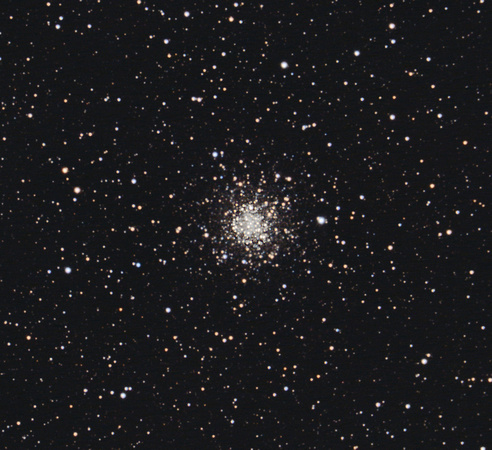Canon 350D Hap Griffin Baader Mod10x180sec at iso 1600
30 Darks/Flats/Bias
Celestron 9.25 reduced 0.63 Personally, I find M56 to be one of the "take it or leave it" Messier objects. Rather bland and not a standout imaging object.
Messier 56 (M56, NGC 6779) is located about half-way between Beta Cygni (Albireo) and Gamma Lyrae. It is one of the less bright Messier globulars, especially lacking the bright core which most globulars have. Nevertheless it is not too difficult to resolve, even at its rather large distance. This led to its classification in concentration class X.
At its distance of 32,900 light-years. its diameter of 8.8 arc minutes corresponds to a linear extension of about 85 light years. Visually, only about the inner third of this great ball, of about 3' diameter is visible. While the NGC mentions "stars of 11th to 14th magnitude", more modern measurements have shown that the brightest stars in this cluster are of about 13th magnitude, and the horizontal branch level is at magnitude 16.2 (according to the
Deep Sky Field Guide to Uranometria 2000.0).
Helen Sawyer Hogg gives an average magnitude of 15.31 for the 25 brightest stars, an overall spectral type of F5, and a color index of -0.04.
Globular cluster M56 was found by
Harlow Shapley to be elongated with ellipticity 8 (E2) at position angle 45 deg. He found only 1 variable star in it, and even until today, only about a dozen of variables were identified in M56. This stellar swarm is approaching us at the high velocity of 145 km/sec.
M56 was one of
Charles Messier's original discoveries; he saw it first on January 23, 1779 and
describes it as a "nebula without stars," like most globular clusters. It was first resolved into stars by
William Herschel around 1784.
May 4, 2008


